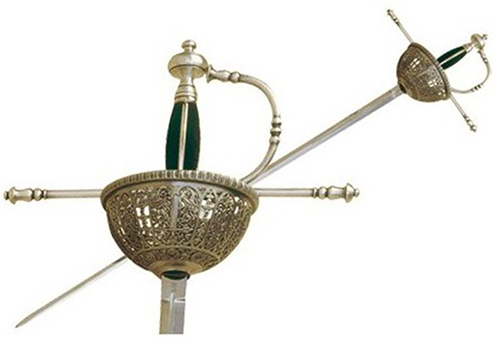SWORDS OF LEGENDS
Human beings have always started to use stone as a defensive weapon. From the stone, as time passed, other types of weaponry arose that were the cause of the rise and fall of empires. Legends appear around the history of weapons, some of which are on the margin of legend and reality. We will talk here about the 10 most iconic and legendary swords in history.
The Excalibur Sword from the Legend of King Arthur and the Wizard Merlin.
Excalibur , probably the most famous of all swords. It was nailed to a rock and could only be pulled out of it by the legendary King Arthur. It seems that the sword could leave his enemies without vision. His sheath collected his dream blood when he was wounded in battle.
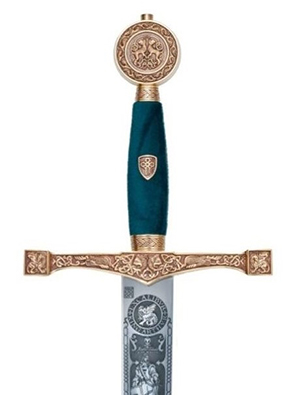
Gram. Scandinavian mythology sword was forged by Völundr , The Magical Blacksmith. With it Sigurd was able to defeat a dragon. This legendary warrior obtained Gram from the tree where Odin had hidden her. The sword broke in battle, but was rebuilt again.
Az isten kardja is the name by which Attila’s sword was called
Attila ‘s sword was considered to be of divine origin, sent by the gods for its invincibility in battles. It is believed that it can be seen in the Museum of Art History in Vienna, but, although it is advertised as such, it is impossible for it to be the sword of Attila, because it was made 500 years after the death of this fierce warrior. Therefore, it was never carried by the leader of the Huns.
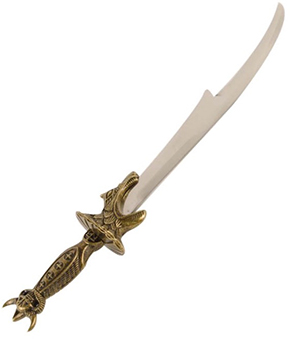
Joyeuse . Legendary sword of Charlemagne , which he used in battles to gather most of Western Europe under his banner. It also has its sacred element, as its hilt is thought to have been made using pieces of the holy spear. Similar information was heard about Durandal , the sword of Roldán, Charlemagne’s nephew. Once again, the legend tells that Roldán threw the sword against a maritime ravine and it remained embedded in it.
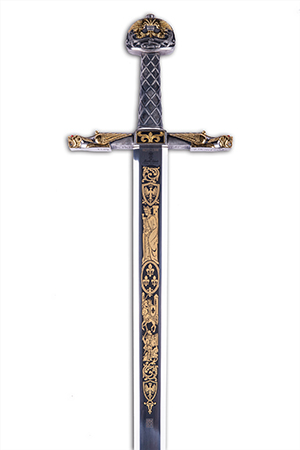
One of the most legendary swords is that of Joan of Arc . It is said that Saint Michael sent Joan to look for the sacred sword, and she found it in the Church of Saint Catherine of Firbois . Using this sword, he fought in the 100-year war, obtaining great victories. However, despite the great services she did to France, Juana died burned at the stake.
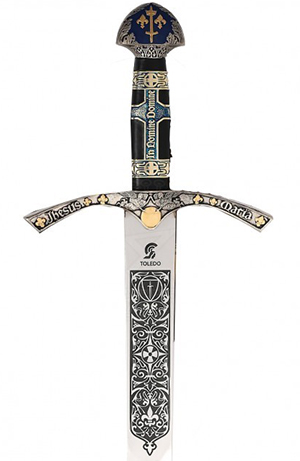
What were the swords of the Cid Campeador called?
Rodrigo Diaz de Vivar, from Burgos, known as El Cid Campeador, had two swords, the Tizona and the Colada , and with them he fought in the Spanish Reconquest. There were doubts about whether the Tizona could be attributed to the Castilian warrior. Later, scientific investigations detected in it the same Damascus steel, which is characterized by its resistance and its cutting edge. You can see this sword in the Museum of Burgos.
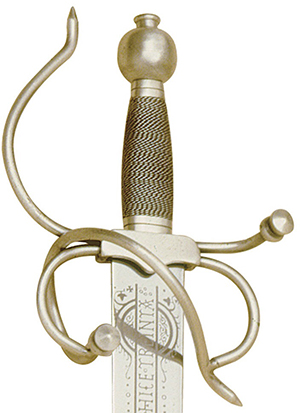
Claymore it was the William Wallace sword. The English suffered their power and fierceness in the wars of Scottish independence. Despite this, Wallace was arrested and executed. When this tragic event occurred, Claymore vanished for hundreds of years. Once found it can be seen on the Wallace monument.
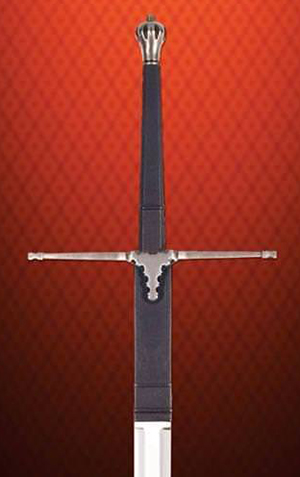
Zulfikar , the sword of Muhammad Hazrat ‘s son-in-law . It is said that the same prophet gave, in the battle of Uhud , Zulfikar to Ali, becoming in this way is a motto of Islam. It is a tremendously fast sword, which with its curved blade develops extraordinary strength.
What does Thor’s Hammer symbolize?
Mjolnir, It is not a sword, but a hammer, but the object of legend like the other swords listed above. Thor, its owner was the Norse God of Lightning. It was made by some dwarves to overcome a challenge that consisted of making the most beautiful objects. Legend has it that the hammer was so immensely powerful that no human or divine means could destroy it. Also, it worked like a boomerang and always returned to Thor every time he threw it.
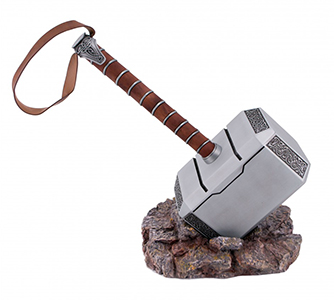
SPANISH TIZONA SWORD
innovation of the rapier sword, the Spanish Tizona, was a very precious weapon in its time, so that it became the last element that the hidalgos parted with when economic difficulties befell them. Many of these hidalgos served Spain to turn it into a great power worthy of an empire, the Spanish Empire.
There was a time in Spanish society, in which having a sword was a very common thing as well as necessary, since duels between knights were very frequent, in which defending honor became a matter of life or death, for not talk about the numerous robberies in which you risked your bag and your life. Everyone carried a sword, even if they had nothing to eat. It can be affirmed without fear of being wrong, that the Spanish tizona was a hallmark of that time.
The Spanish tizona is a bowl rapier, with special characteristics to the normal rapier. During the fifteenth century, with the multiplication of armor, sword blows with the old swords ceased to be effective in the face of the almost shielding of the knight who wears the armor. Then other swords appear with narrower blades designed to prick taking advantage of the few holes that the armor had.
It is, perhaps, in Italy at the end of the 15th century, where the rapier or dress sword appears for the first time. It is used mostly by civilians who live in cities and there is no self-respecting gentleman who does not carry a rapier. The first rapiers were heavy swords made both for cutting and for stabbing, but the type was refined and by the middle of the 16th century they were already spiked and refined swords. With the appearance of this type of sword, the prevailing fencing until then, where the blow and the slash were imposed, changed. Now the best swordsman is not the strongest but the most skilled. The triumph of this type of sword will give rise to a new type of fencing in which skill prevails over arm strength. The sword is wielded with the fingers, so it is necessary to safeguard them. For this, the loop guards arise. Luxury is attached to these swords, to the point that some guards could have encrusted jewels.
In northern Europe and England, rapiers were shorter in length and with broader blades. Its use was only military. On the other hand, in Italy and Spain, with few regulations on the use and possession of swords, these were very slender, reaching measurements of 120 cm. and the best rapier fencers were Spanish and Italian. At the beginning of the 17th century we can see in Spain the rapier with a cup garnish, with which the hand is much better protected.
These Spanish rapiers are very famous and spread very quickly. There is a great deal of activity in the manufacture of these cup or saucepan rapiers. New designs are applied to the bowl, some very expensive , adding precious stones or metals. They also became their sign of distinction, with knights vying for the honor of wearing the most beautiful or most expensive sword. In addition, these rapiers evolved as edged weapons and bowls with steel burrs flourished whose mission was to catch and break the opponent’s blade. At this time the Thirds impose their law in Europe, they obtain victory after victory in Europe. The bowl sword was an integral part of the set of weapons, both officers and soldiers. Such was the fame achieved by these swords, both in Spain and abroad, that a lot of blacksmiths were born who dedicated themselves to forging Toledo rapiers.
When the Spanish empire collapsed, the same thing happened in Europe with the Spanish black sword, in favor of the French sword, much lighter and faster. In Spain, the death blow was dealt by the arrival of King Philip V of Bourbon from France, who brought with him French fashions and imposed more restrictive legislation on the use of weapons. All this led to the disappearance of the fashionable Spanish tizona sword and the trade attached to its production. However, they did not completely disappear as Spanish brands made in the 19th century have been found. There are even testimonies that they were used in the Spanish War of Independence.
WHAT IS THE SPANISH TIZONA LIKE?
Long double-edged steel blade is distinguished , with a diamond collateral part, not sharp. The hilt is intricate and refined with S-shaped guard and openwork defense shells lined with red plush, all of mild steel material. The wooden handle is encircled with intertwined steel filament, very normal at that time.
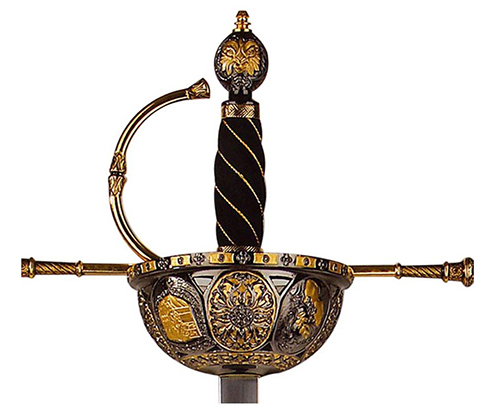
WHAT SWORD DID THE SPANISH USE IN THE 18TH CENTURY?
They used the rapier, nowadays we call it rapier. This sword came to light in the Renaissance, and in Spain it indicates a type of sword with a rectilinear and long blade, used with one hand. The primitive Spanish name for the rapier is tizona, which has nothing to do with the Tizona del Cid sword.
WHAT SWORD DID THE SPANISH TERCIOS USE?
Although there were different types of sword at the time of the tercios, the most used was the one known as the Spanish tizona sword, which is a rapier sword with Spanish characteristics. Depending on how they are stored, they are divided into cup, loop or shell rapiers. They weighed between 1.5 and 2 kg and about 1 meter in length.
